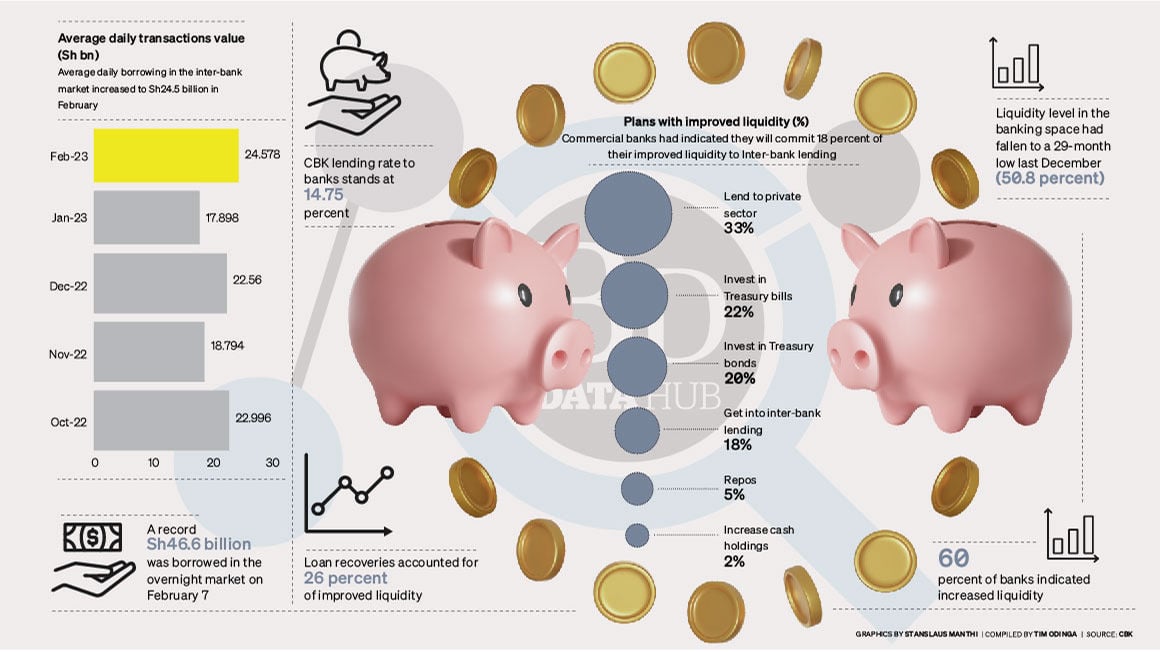Inter-bank lending rate at 18-month high on tight liquidity

The daily average borrowings by banks from their peers jumped 23.5 percent in February compared to a month earlier, pushing their lending rates to an 18-month high.
Data from the Central Bank of Kenya (CBK) show that inter-bank lending rose to a daily average of Sh23 billion in February from Sh17.8 billion in January amid fears the rising costs of accessing the funds could filter through to customer loans.
Lenders do not borrow from the interbank market for onward lending to customers and rely on the window to meet regulatory daily cash requirements, whose additional costs could affect the pricing of commercial loans.
The inter-bank rate climbed to an 18-month high of 6.9 percent last Friday in the wake of higher demand for funding in the emergency window.
The daily borrowings touched a high of Sh46.6 billion on February 7, pointing to thinning liquidity in the banking sector that translates to slower lending to the private sector.
Liquidity in the banking sector has been declining progressively to 50.8 percent in December, the lowest since July 2020 when it stood at 49.7 percent.
“Liquidity in the money market was low as tax remittances were more than government payments,” said CBK in February.
The Interbank market allows banks to borrow from each other on a short-term basis to meet their capital requirements to meet required liquidity and manage potential bank runs by clients.
The majority of the credit has a maturity period of one week or less, and the interest charged depends on the availability of money, prevailing rates and terms of the contract, such as length.
According to the credit survey report for the last quarter of 2022 banks had indicated that planned to commit 18 percent of their cash for Interbank lending against 33 percent to the private sector.
A high return for a shorter period of time combined with a relatively lower risk compared to the private sector will entice banks to increase participation in this peer-to-peer market, starving out the private sector.
Credit to the private sector which was depressed during the rate cap era, picked up last year hitting a six-year high of 14.2 percent in July but declined slightly to 12.5 percent at the end of the year.

